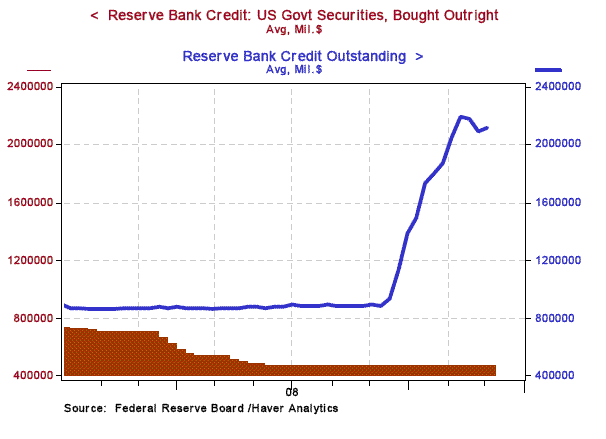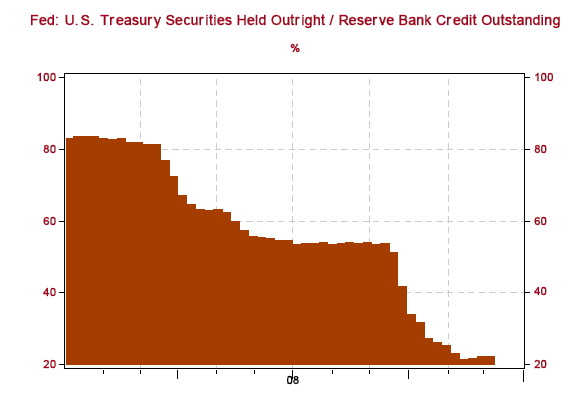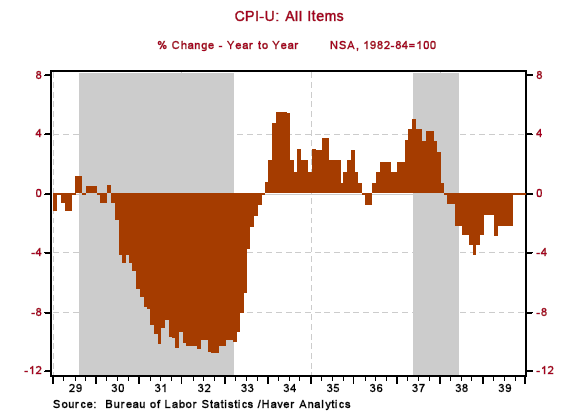Fed Seeks to Issue Own Debt to Soak up Excess Liquidly
Interest-Rates / US Debt Dec 11, 2008 - 10:29 AM GMTBy: Paul_L_Kasriel

 The Credit Rating on a Benevolent Counterfeiters Debt - Infinity A? - In today's Wall Street Journal a trial balloon was floated with regard to the Fed issuing its own debt. This is akin to a counterfeiter issuing her own debt. There could never be a default. All the counterfeiter would have to do is print up some new currency to pay the interest on or redeem her debt. The Fed also possesses the power of the printing press, so it would never default on its debt. Of course, there is no guarantee what the future purchasing power of the payments would be to the Fed's creditors, but that is a different issue.
The Credit Rating on a Benevolent Counterfeiters Debt - Infinity A? - In today's Wall Street Journal a trial balloon was floated with regard to the Fed issuing its own debt. This is akin to a counterfeiter issuing her own debt. There could never be a default. All the counterfeiter would have to do is print up some new currency to pay the interest on or redeem her debt. The Fed also possesses the power of the printing press, so it would never default on its debt. Of course, there is no guarantee what the future purchasing power of the payments would be to the Fed's creditors, but that is a different issue.
Why would the Fed be contemplating issuing its own debt? To soak up in the future some of the massive credit the Fed has created in the past year or so. Why would the Fed not just sell U.S. Treasury securities from its portfolio in order to soak up this excess Fed credit? Because, as shown in Chart 1, the Fed's outright holdings of U.S. Treasury securities has dropped from a shade under $800 billion to about $475 billion as Fed credit outstanding has risen from a little over $800 billion to about $2.1 trillion . In percentage terms, the Fed's outright holdings of U.S. Treasury securities has gone from a bit over 90% of reserve bank credit outstanding to about 22-1/2% (Chart 2). The Fed is afraid it might run out of U.S. Treasury securities to sell!
Chart 1

Chart 2

The Fed recently had been leaning on the Treasury to help in its reserve credit mopping up operations. The Treasury would sell some special T-bills to the public, deposit the proceeds in the Treasury's account at the Fed, and leave those deposits at the Fed for a while. This transfer of funds from the public to the Treasury's Fed account effectively drains reserves (Fed credit) from the financial system. But this is cumbersome. It takes an extra phone call to the Treasury to alert them of the need. More importantly, the Treasury is going to issuing a boatload of its securities next year to finance the huge Obama fiscal stimulus plan now being worked up. The Treasury will be bumping up against its legal debt ceiling as a result. Issuing securities to mop up reserves for the Fed would strain the Treasury's borrowing "capacity." Hence the Fed's desire to quit outsourcing open market operations and bringing them back in house.
I can see nothing sinister about all this. It is not a conspiracy to print money. Just the opposite. It is a way to destroy some of the paper the Fed already has "printed."
There is another way the Fed could soak up some of the excess liquidity it has created. It could raise the legal reserve requirements depository institutions must hold against their transactions deposits. This would be too blunt and inflexible an instrument. Besides, the Fed still may be sensitive about doing this given its 1937 experience. Banks' excess reserves had ballooned back then, too.
The Fed was fearful that the banking system would start lending out these excess reserves, which could have increased CPI inflation more than it already was (see Chart 3). We went from deflation in 1933 to inflation in 1934 and beyond. In 1937, CPI inflation was running in excess of 4%. So, in 1937, the Fed doubled reserve requirements to soak up excess reserves and prevent even higher inflation. It worked. The economy entered the second leg of the Great Depression in 1937 and deflation re-appeared. As I said, the Fed might still be a little sensitive about this.
Chart 3

By Paul L. Kasriel
The Northern Trust Company
Economic Research Department - Daily Global Commentary
Copyright © 2008 Paul Kasriel
Paul joined the economic research unit of The Northern Trust Company in 1986 as Vice President and Economist, being named Senior Vice President and Director of Economic Research in 2000. His economic and interest rate forecasts are used both internally and by clients. The accuracy of the Economic Research Department's forecasts has consistently been highly-ranked in the Blue Chip survey of about 50 forecasters over the years. To that point, Paul received the prestigious 2006 Lawrence R. Klein Award for having the most accurate economic forecast among the Blue Chip survey participants for the years 2002 through 2005.
The opinions expressed herein are those of the author and do not necessarily represent the views of The Northern Trust Company. The Northern Trust Company does not warrant the accuracy or completeness of information contained herein, such information is subject to change and is not intended to influence your investment decisions.
Paul L. Kasriel Archive |
© 2005-2022 http://www.MarketOracle.co.uk - The Market Oracle is a FREE Daily Financial Markets Analysis & Forecasting online publication.


